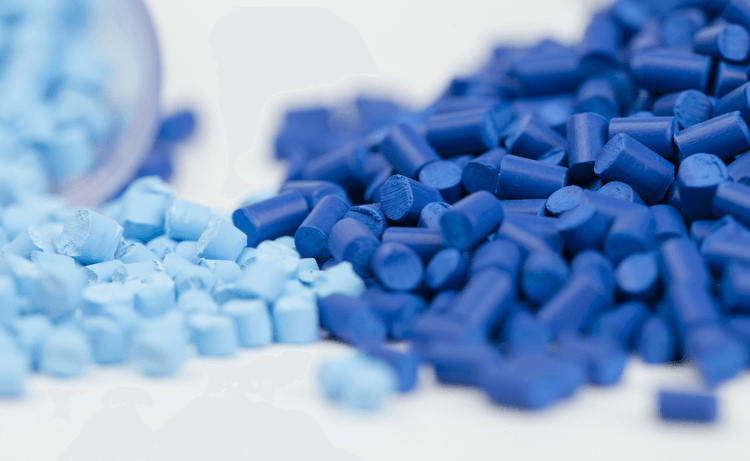
5 Benefits of Choosing Thermoplastic Components for Can’t-Fail Applications
Posted by CDI Products on Jun 22, 2021
Thermoplastics are a family of polymers with numerous industrial applications. Known for durability, lightness, and relatively low production costs, thermoplastics can be melted and recast almost indefinitely. Once heated, they are molded into a wide variety of shapes, which then harden upon cooling.
High-performance engineered thermoplastics – versus those used for consumer goods – cover a wide range of markets, from aerospace and medical implants to the energy sector and electronics industries. If you’re curious about the most common engineered thermoplastics for industries, here’s a list of some of the most frequently used types.
As you consider the best material for your industrial-use project, you may be weighing the pros and cons of a number of material types. Along with thermoplastics, these might include other polymer classes like elastomers or thermosets, or non-polymer materials like metallics, ceramics, glasses, or hybrid composites.
Before you make a selection, it’s important to first look at the product’s ultimate functionality requirements, which can then drive material selection and product design engineering.
In essence, when vital functions are on the line – say, pressurized gas pipelines or the braking components on a jumbo jet – it’s critical to have parts and components that you can rely on to perform. In many cases, thermoplastics are the material of choice in these types of can’t-fail environments.
Here are five key differentiators of thermoplastics to help you decide if this class of polymer is right for your next project.
5 Benefits of Thermoplastic Components
- Chemical resistance — Thermoplastics are often the material of choice for seals and valves, as properly chosen materials are slow to degrade or lose performance when in contact with gases or fluids. This is a critically important differentiator in can’t-fail applications or extreme environments, such as oil and gas pipelines, medical implants, or aerospace. Because the gas or fluid is slow to (or simply can’t) permeate the polymer material, components won’t rust, corrode, or degrade like other materials.
- Strength-to-weight ratio — Particularly for aerospace and automotive applications, in which weight is an important consideration, thermoplastics are the preferred choice over metal parts because they are both strong and lightweight.
- Durability — Because of their combination of abrasion, temperature, pressure, and fatigue resistance, engineered thermoplastics are unparalleled in durability.
- Cost — Thermoplastics are easier to manufacture relative to metals, and net-shape or near to net-shape articles can be produced more readily at lower total cost. Thermoplastics are easily melted at moderate temperatures and more readily formed into a finished or semi-finished part, avoiding or reducing the complexity of secondary operations, thus reducing production costs.
- Sustainability — Plastics get a bad rap, but responsible manufacturers are working hard to make them more sustainable. At CDI, we are always looking at ways to recycle and reuse our thermoplastic scrap stream, with a goal of keeping plastic waste out of landfills and out of the environment. We also operate on 100% renewable energy at our Houston facility.
Thermoplastics: Critical Components That Reduce Risk
Thermoplastics are so valuable because they can reliably perform in critical environments.
Consider engineered thermoplastic seals that segregate different gas and fluid environments, often isolating high pressure from low pressure, or substance A from substance B. A well-chosen and well-designed thermoplastic component isn’t affected negatively in contact with a given chemical or chemical mixture, and the parts won’t degrade, deform, or change shape.
And these benefits have huge implications for human safety and environmental protection. If the thermoplastic components of the braking system of a Boeing 777 fail prematurely, or gas and oil pipelines leak, the consequences can be catastrophic.
While alternatives to thermoplastics do exist, they will have different design, cost, durability, and weight considerations, which often render them a less optimal choice.
How to Determine the Right Material for the Application
From durability to chemical resistance, thermoplastics have a lot going for them. But that doesn’t mean they’re the ideal material choice in all circumstances. Elastomers can be better in terms of dynamic fatigue and resilience, may be easier to process into some desired shapes, and may therefore be less expensive to produce.
Material selection is always about finding the right balance among many different properties, and avoiding or minimizing compromise in finding the right material for the job.
That’s why partnering with a manufacturer with in-house material science expertise is so critical for OEMs. You can think you have the best material in the world, but issues will arise if the material doesn’t meet all requirements across manufacturing, installation and, most importantly, the ultimate service environment.
Good material scientists and design engineers can help you determine the right material properties you need based on where, for how long, and in what conditions your part needs to perform.
Have questions about choosing the right material for your next project? Get expert advice to help select the material exactly suited to the job.
Topic: engineered thermoplastics, thermoplastics, thermoplastic components
